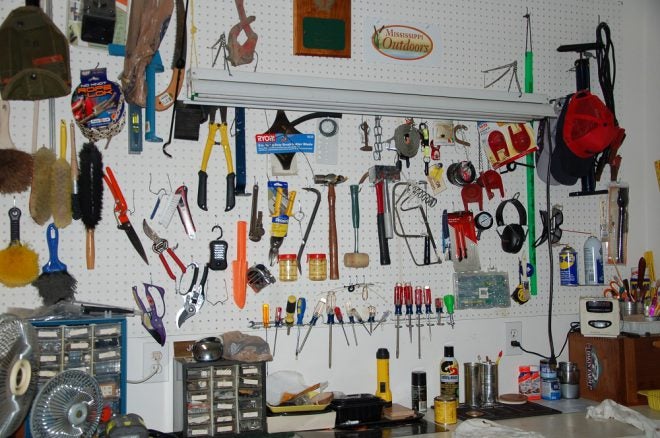The First Principle of Prepping
Dr. John Woods 12.06.16

The first principle of effective prepping is organization. At this trait my father was the champion. He learned it from 20 years in the military and a long flying career until he was 75 years old. He lived by the time honored principle of, “a place for everything and everything in its place.”
Accordingly his workshop and aircraft hangers were immaculate museums of order and perfection. Tools hung on peg board walls, each tool being outlined by black marker ink. With just a casual glance he could tell what tool was missing, and if I was the one that did not return it to its honored position, there was pure hell to pay.
But, you know he was right. He taught the lesson well, and I learned it well. I have not been so successful in passing this trait along to my wife and children. If ever I raise my voice around the house or the garage, it is because I am hunting for something that has its rightful place in my organization plan but that is missing. Most often this is yard tools or trimmers. Let’s not even talk about stuff in the kitchen. I empty the dishwasher so I can find everything again.
And constantly my wife is saying, “Where is my this or that?” And I once again attempt to teach the golden rule of organization by replying, “Well, if you would just put it back where it belongs when you are done with it, then it would be where you can find it.” To no avail I am afraid.
Do not make this mistake as a prepper or it will come back to bite your rear end on a regular basis. Create a system of organization by sorting everything out into like groups, then store these items together in a sole container, mark it, and put it where it can always be found in the same place every time. Then if you have to bug out, you will know where critical gear is located time and time again.
Start with your prepper tool box. First, go locate all your tools. Wipe them down again, and put them back in a cleaned out box. I know bigger tools like wrenches, and hammers are going to jumble around in the bottom of a carry tool box. Try to group stuff together even in the top tray. If you find there are tools in there you rarely use, then put them on the peg board wall.
If you have a big roller tool box unit(s), as you should, then each drawer should be in order from small to large, left to right, etc. Then if a socket is out of place or a screwdriver, then you will know it immediately. Same for open end wrenches, Allen wrenches, and so forth. Keep this box locked so people will not pilfer it. I do not loan my tools to anybody, ever. I may very well help a neighbor do something, but they cannot borrow or use my tools and they know this.
Likewise organize your survival protection guns, ammo, and gear in a like manner. You choose the system just so it works for you. Shelve ammo by caliber all together in like groups. For example, .22 rimfire on the top shelf of a cabinet, then each larger caliber in order with bigger long gun or shotshell ammo on the bottom. When you unlock and open the door, you know right where to find what you want. This might include pre-loaded magazines as well lined up in order.
Organize your assorted pistol and rifle magazines in the same manner. Buy plastic boxes dedicated to each type. To help identify what you have, make little cardboard dividers to place between different types of pistol magazines by caliber or specific gun models and label them. Don’t mix all of your 1911 magazines all together, but each by the pistol they came with. I’m just funny that way. Thanks Dad.
Then using the storage box organization model, store hunting, fishing gear, and other categories of stuff the same way. For example, use separate gear boxes for deer hunting, turkey hunting, optics, AR accessories by type, knives, holsters, pistol cases, slings, ammo holders, and such. Use clear boxes with snap locking tops. Mark on the ends of each box what is in the box.
Store the boxes on shelves ideally inside the house with a controlled climate environment so stuff does not deteriorate. Our southern climate with high summer heat and humidity ruins leather and rubber and rusts metal. Once shelved or stacked then all you have to do is glance up to see which container you want to find what you need or looking for. Rocket science, no, but do it. The same formats can be followed for camping gear, sporting gear, hobbies, off season clothing storage, food canning supplies, and whatever. The key is to organize it and keep it organized.
Successful and efficient prepping requires a lot of planning and execution. Primary on the list of skills to acquire is how to organize yourself and your stuff. Then you will be ready for just about anything.